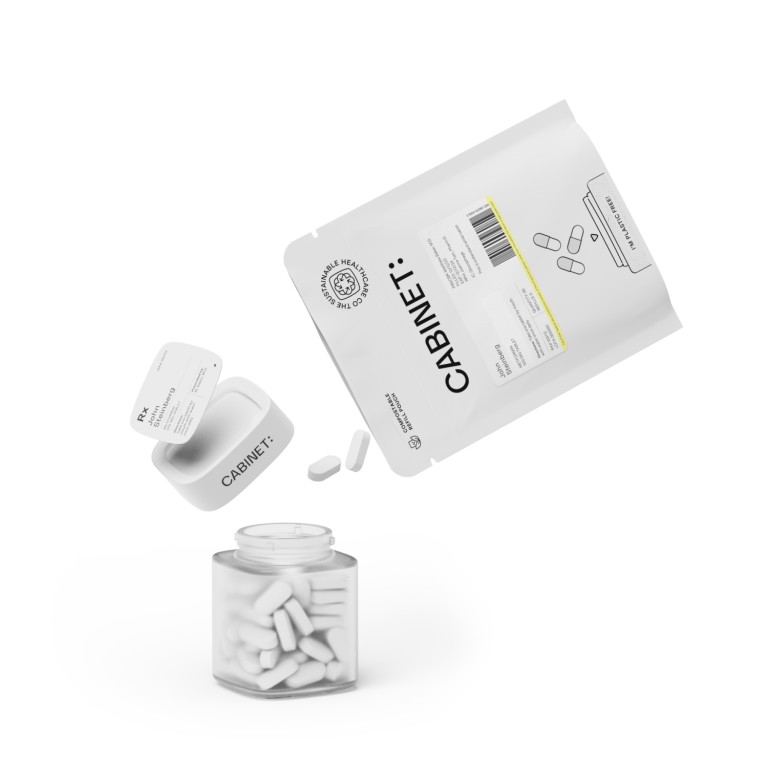In order to understand if it is safe to mix Pristiq and Propranolol, it is important to first have a comprehensive understanding of both medications. Pristiq, also known as desvenlafaxine, is a prescription medication primarily used to treat major depressive disorder and generalized anxiety disorder. On the other hand, Propranolol is a medication classified as a beta-blocker, commonly prescribed for the management of high blood pressure, heart rhythm disorders, and migraine prevention. Although these drugs have different mechanisms of action, they can both play a significant role in improving an individual's quality of life when used appropriately.
Understanding Pristiq: Uses and Side Effects
Let's explore Pristiq in more detail. Pristiq is an antidepressant that belongs to a class of medications called selective serotonin and norepinephrine reuptake inhibitors (SNRIs). It functions by increasing the levels of serotonin and norepinephrine, two neurotransmitters in the brain that are associated with mood regulation. By balancing these neurotransmitters, Pristiq can alleviate symptoms of depression and anxiety.
Like any medication, there are potential side effects associated with Pristiq. Common side effects may include nausea, dizziness, headache, insomnia, and dry mouth. These side effects are usually mild and transient, but it is important to consult a healthcare professional if they persist or worsen. Rarely, Pristiq may cause more serious side effects such as increased blood pressure, liver problems, and serotonin syndrome.
What is Pristiq?
Pristiq, also known as desvenlafaxine, is an antidepressant medication prescribed to help manage major depressive disorder and generalized anxiety disorder. It is part of the selective serotonin and norepinephrine reuptake inhibitors (SNRIs) class of medications. By increasing the availability of certain neurotransmitters in the brain, Pristiq can help improve mood and reduce anxiety.
Common Uses of Pristiq
Pristiq is primarily used to treat major depressive disorder, a mental health condition characterized by persistent feelings of sadness and loss of interest or pleasure. Additionally, it is approved for the treatment of generalized anxiety disorder, a condition marked by excessive worrying and tension. Pristiq may also be used off-label to manage other conditions such as menopausal symptoms, attention-deficit/hyperactivity disorder (ADHD), and neuropathic pain.
Potential Side Effects of Pristiq
While Pristiq can be an effective treatment option, it is essential to be aware of potential side effects. Some common side effects include nausea, dizziness, headache, insomnia, and dry mouth. These side effects are generally mild and transient, but it is important to consult with a healthcare professional if they become bothersome or persist. In rare cases, Pristiq may lead to more serious adverse effects like increased blood pressure, liver problems, and serotonin syndrome. It is crucial to discuss any concerns or unusual symptoms with a healthcare provider to ensure safe and effective use of Pristiq.
Getting to Know Propranolol: Benefits and Risks
Now let's shift our focus to Propranolol. Propranolol is a medication classified as a beta-blocker, primarily used to manage high blood pressure, certain heart rhythm disorders, and prevent migraines. It works by blocking the effects of adrenaline on the heart, reducing heart rate and blood pressure in the process.
An Overview of Propranolol
Propranolol, most commonly sold under the brand name Inderal, is a medication from the beta-blocker class. Beta-blockers act on beta receptors in the heart, preventing the effects of adrenaline or epinephrine. By doing so, Propranolol can help regulate heart rate and blood pressure, making it an effective treatment for various cardiovascular conditions.
Why is Propranolol Prescribed?
Propranolol is frequently prescribed for the management of high blood pressure, a condition that can lead to serious complications if left untreated. It is also used to treat certain heart rhythm disorders such as atrial fibrillation and ventricular tachycardia. In addition to its cardiovascular benefits, Propranolol is often prescribed to prevent migraines and relieve symptoms associated with anxiety disorders such as tremors and rapid heartbeat.
Possible Risks of Propranolol
Like any medication, Propranolol carries some risks that should be considered. Common side effects may include fatigue, dizziness, nausea, and cold hands or feet. These side effects are usually mild and temporary. However, it is essential to discuss any concerns with a healthcare professional, especially if the side effects persist or worsen. Additionally, Propranolol should be used with caution in individuals with certain conditions such as asthma, as it may exacerbate respiratory symptoms. It is always important to consult with a healthcare provider to determine the most appropriate treatment options.
Interactions Between Pristiq and Propranolol
Now that we have a solid understanding of Pristiq and Propranolol individually, let's explore their potential interactions when used together.
How Pristiq and Propranolol Interact
Recent data shows that there are no significant drug interactions between Pristiq and Propranolol. This means that when taken together, there is no evidence to suggest that one medication will interfere with the effectiveness or safety of the other. However, it is important to note that individual responses to medications can vary, and some individuals may experience unique interactions or side effects.
Risks of Mixing Pristiq and Propranolol
Although there are no specific risks associated with mixing Pristiq and Propranolol, it is still crucial to consult a healthcare professional before combining these medications. They can assess your individual medical history and current medications to ensure that there are no potential contraindications or increased risks. Additionally, they can provide personalized guidance on the appropriate dosage and schedule for each medication, minimizing the chances of adverse effects.
Safe Use of Pristiq and Propranolol
When considering the use of Pristiq and Propranolol concurrently, it is essential to prioritize safety and optimal treatment outcomes.
When to Consult a Healthcare Professional
If you are considering combining Pristiq and Propranolol, it is highly recommended to consult a healthcare professional before making any changes to your medication regimen. They can review your medical history and current medications to ensure that there are no contraindications or potential risks. Your healthcare provider can also provide guidance on proper dosage and scheduling to maximize benefits and minimize adverse effects.
Alternatives to Mixing Pristiq and Propranolol
In some cases, a healthcare professional may recommend alternative treatment options instead of combining Pristiq and Propranolol. Depending on your specific condition, there may be other medications or interventions that can effectively manage your symptoms with fewer potential risks or interactions. It is important to keep an open line of communication with your healthcare professional to explore all possible avenues for optimal treatment.
Safety Measures for Using Pristiq and Propranolol Concurrently
If your healthcare professional determines that it is safe to use Pristiq and Propranolol together, there are several safety measures you can take to ensure their effective and safe use. Always adhere to the prescribed dosage and schedule, and do not adjust the medications without consulting your healthcare provider. Be proactive in reporting any unusual or concerning symptoms to your healthcare professional to ensure prompt evaluation and appropriate adjustments if needed.
In conclusion, while there are no specific interactions or risks associated with mixing Pristiq and Propranolol, it is important to consult a healthcare professional before combining these medications. They can provide personalized guidance based on your individual medical history and current medications, ensuring the safety and efficacy of your treatment regimen. By prioritizing communication with your healthcare provider and following their recommendations, you can make informed decisions for your overall well-being.









